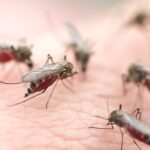Living in the Houston, TX area, you might have encountered ticks on more than one occasion. These tiny, blood-sucking parasites are not only a nuisance but can also pose significant health risks. In this blog post, we will discuss the different types of ticks you might find in the Houston area, methods to control them, and potential health risks they carry.
Types of Ticks in Houston
There are several species of ticks that can be found in the Houston, TX area. The most common ones are:
- American Dog Tick (Dermacentor variabilis): This species is most commonly found in grassy areas and along trails. They can transmit Rocky Mountain spotted fever and tularemia to humans.
- Brown Dog Tick (Rhipicephalus sanguineus): These ticks prefer to feed on dogs but can also bite humans. They can transmit canine ehrlichiosis and babesiosis to dogs, and rarely transmit these diseases to humans.
- Lone Star Tick (Amblyomma americanum): These ticks are found in wooded and grassy areas and are known to transmit diseases such as ehrlichiosis and tularemia to humans.
- Black-legged Tick (Ixodes scapularis): Also known as the deer tick, this species can transmit Lyme disease and other illnesses to humans.
Tick Control Methods
To reduce the risk of tick exposure and protect your family, pets, and property, follow these tick control methods:
- Maintain your yard: Keep your grass trimmed, rake leaves, and clear away brush and debris to reduce tick habitats. Create a buffer zone using wood chips or gravel between wooded areas and your lawn to restrict tick migration.
- Protect your pets: Use tick prevention products such as collars, sprays, or spot-on treatments, and regularly check your pets for ticks. Consult your veterinarian for the best tick prevention products suited for your pets.
- Use tick repellents: Apply EPA-approved tick repellents on your skin and clothing when venturing into tick-infested areas. Follow the product instructions for proper application and reapplication.
- Dress appropriately: Wear light-colored clothing to easily spot ticks, and tuck your pants into your socks to prevent ticks from crawling up your legs.
- Perform tick checks: After spending time outdoors, thoroughly check yourself, your children, and your pets for ticks. Be sure to check areas such as the armpits, groin, behind the ears, and the scalp.
- Professional pest control: If ticks continue to be a problem, consider hiring a professional pest control service like All N-1 Pest Control Management to treat your property for ticks.
Health Risks from Ticks
Ticks are known to transmit a variety of diseases to humans and animals. Some of the most common tick-borne illnesses include:
- Lyme disease: Caused by the bacterium Borrelia burgdorferi, Lyme disease can lead to symptoms such as fever, headache, fatigue, and a characteristic skin rash called erythema migrans.
- Rocky Mountain spotted fever: A potentially life-threatening illness caused by the bacterium Rickettsia rickettsii. Symptoms include fever, headache, rash, and muscle pain.
- Ehrlichiosis: This bacterial illness can cause fever, headache, muscle pain, and sometimes a rash.
- Tularemia: Also known as rabbit fever, this bacterial infection can cause a range of symptoms, including skin ulcers, swollen glands, and pneumonia.
In conclusion, staying vigilant and implementing effective tick control methods is essential to keep your family, pets, and property safe from tick-borne diseases. If you suspect you have a tick problem or need professional assistance, don’t hesitate to contact All N-1 Pest Control Management today. Our team of experts is here to help you maintain a tick-free environment. Reach out to us and let’s safeguard your home together!



